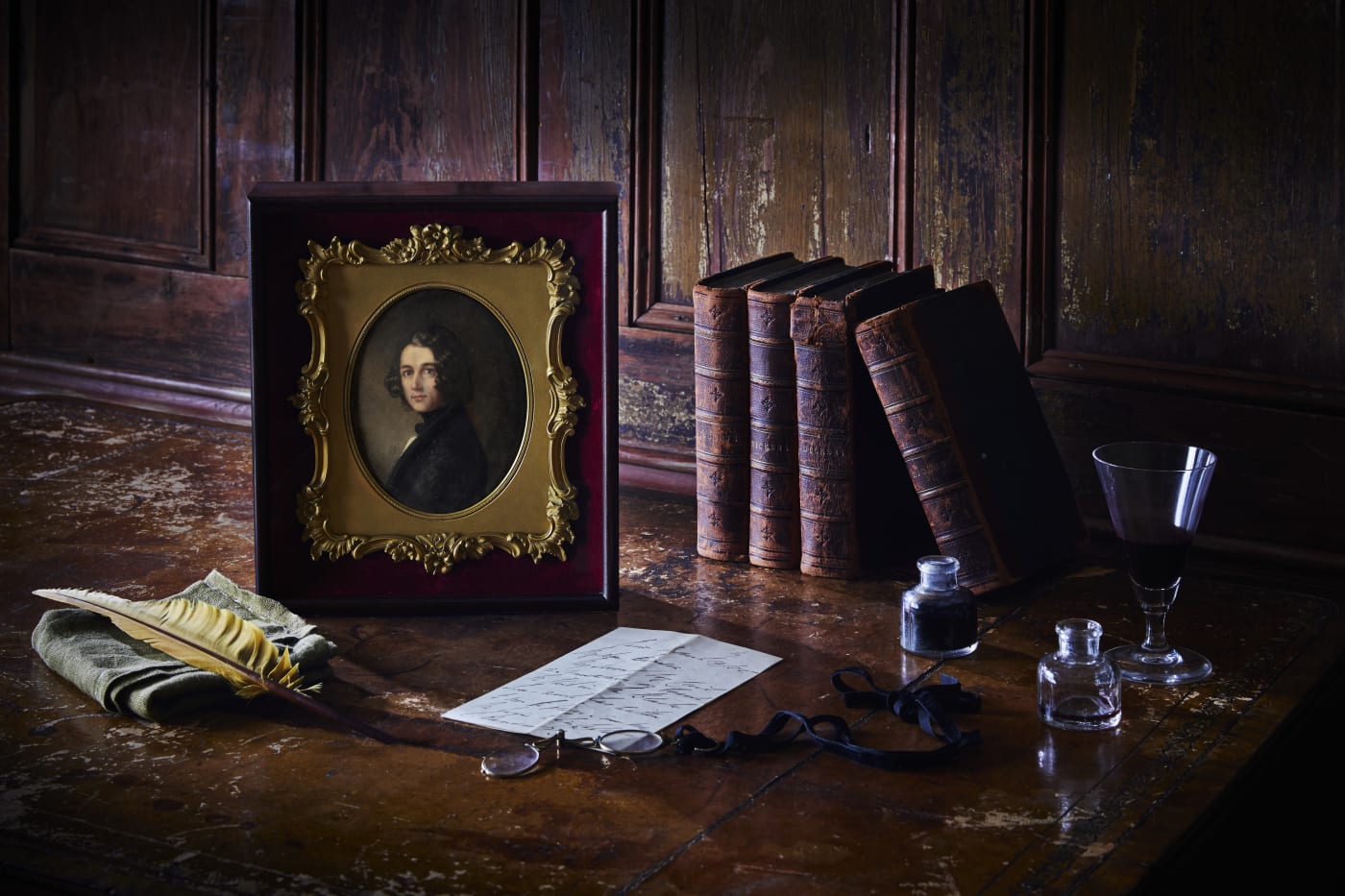This portrait adds greatly to our perception of the charismatic young blade that Dickens was at the time and is so different to the avuncular, bearded man we know from photographs. Unlike other literary portraits of the period, that can be formulaic, the subject fixes...
The lost portrait of Charles Dickens as an emerging literary star at the age of 31, officially lost for over 130 years, has miraculously turned up in a box of trinkets in South Africa. Painted in late 1843 by Margaret Gillies (1803–1887) during the same weeks Dickens was writing A Christmas Carol, it was last seen in public in 1844 when exhibited at the Royal Academy of Arts in London. The portrait has now returned to us in time for the 175th anniversary of Dickens’ Christmas masterpiece, first mentioned by the author in a letter dated to a day he was sitting for Gillies. This evening, the art dealers Philip Mould & Company, who formally re-identified the portrait, will unveil it after an interlude of over a century and a half. It will go on display in an exhibition, ‘Charles Dickens: The Lost Portrait’, opening tomorrow and running until 25 January 2019. Until now the portrait has been known only...
The lost portrait of Charles Dickens as an emerging literary star at the age of 31, officially lost for over 130 years, has miraculously turned up in a box of trinkets in South Africa. Painted in late 1843 by Margaret Gillies (1803–1887) during the same weeks Dickens was writing A Christmas Carol, it was last seen in public in 1844 when exhibited at the Royal Academy of Arts in London. The portrait has now returned to us in time for the 175th anniversary of Dickens’ Christmas masterpiece, first mentioned by the author in a letter dated to a day he was sitting for Gillies. This evening, the art dealers Philip Mould & Company, who formally re-identified the portrait, will unveil it after an interlude of over a century and a half. It will go on display in an exhibition, ‘Charles Dickens: The Lost Portrait’, opening tomorrow and running until 25 January 2019.
Until now the portrait has been known only by a simplified black-and-white print, which has none of the brilliance of the original and was the frontispiece of a book entitled A New Spirit of the Age (1844). Edited by Richard Henry Horne, this collection of essays highlighted the great figures of the early Victorian period, from Alfred Tennyson and Robert Browning to Romantic stalwarts such as William Wordsworth and Mary Shelley. Dickens was the first entry.
Despite attempts to locate the portrait during her lifetime, even Gillies herself was at a loss to know what had happened to it, reporting it unaccounted for in 1886. Dickens’ contemporary, the poet Elizabeth Barrett Browning, had seen the original and remarked that it showed him as having ‘the dust and mud of humanity about him, notwithstanding those eagle eyes.’ When it was rediscovered a layer of mould was obscuring part of Dickens’ body. It has now undergone conservation work which reveals the stunning detail beneath.





